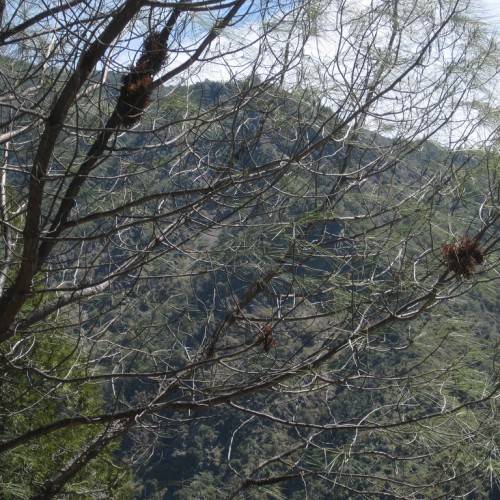
Douglas Fir Dwarf Mistletoe
Arceuthobium douglasii
Watering:
Minimal
Hardiness Zone:
Sun:
full sun
Growth Rate:
Low
Invasive:
Yes
Care Level:
Medium
watering
The amount and frequency of watering for larch dwarf mistletoe (Arceuthobium campylopodum subsp. laricis) will depend largely on the season and the climate in which it is grown. In summer when the weather is warm and especially in hot climates, larch dwarf mistletoe must be watered more frequently and in large quantities. This should be done every 2 to 3 days with the top few inches of soil kept moist. During a drought, it is essential that this plant receive more water than usual. In winter, when temperatures are lower and the weather is cooler, larch dwarf mistletoe should be watered less frequently - about once a week. Allow the top few inches of soil to become slightly dry before applying more water. Larch dwarf mistletoe should be watered deeply each time so as to ensure the entire root system is soaked. In extremely hot climates, an additional misting of the foliage is recommended.
sunlight
Larch Dwarf Mistletoe (Arceuthobium campylopodum subsp. laricis) grows best in an area with direct sunlight for approximately 4 to 6 hours a day. High-intensity sun will help the plant flourish and is essential for growth. Sunlight should be most intense around the mid-day, and ideally, avoid direct sunlight during the hottest hours of the day. If the sun exposure is too great, the foliage of the plant can burn, so it needs protection from direct sun during the hottest periods of the day. As it is a seasonal plant, it should also receive indirect light during the winter months.
pruning
Larch Dwarf Mistletoe (Arceuthobium campylopodum subsp. laricis) should be pruned twice a year. In springtime, the pruning should take place after the last frost of the season and then again in the late summer or early fall. Pruning should involve removing any dead, dying, or diseased branches from the plants. In addition, any weak or competing branches should be removed to ensure the main branches receive sufficient light and space to grow and develop. Springtime pruning will also reduce the amount of mistletoe growth and limit its spread. When pruning in the late summer or early fall, it should focus on the removal of any mistletoe present on the branches of the larch. This will prevent the spread of the disease to other trees.
